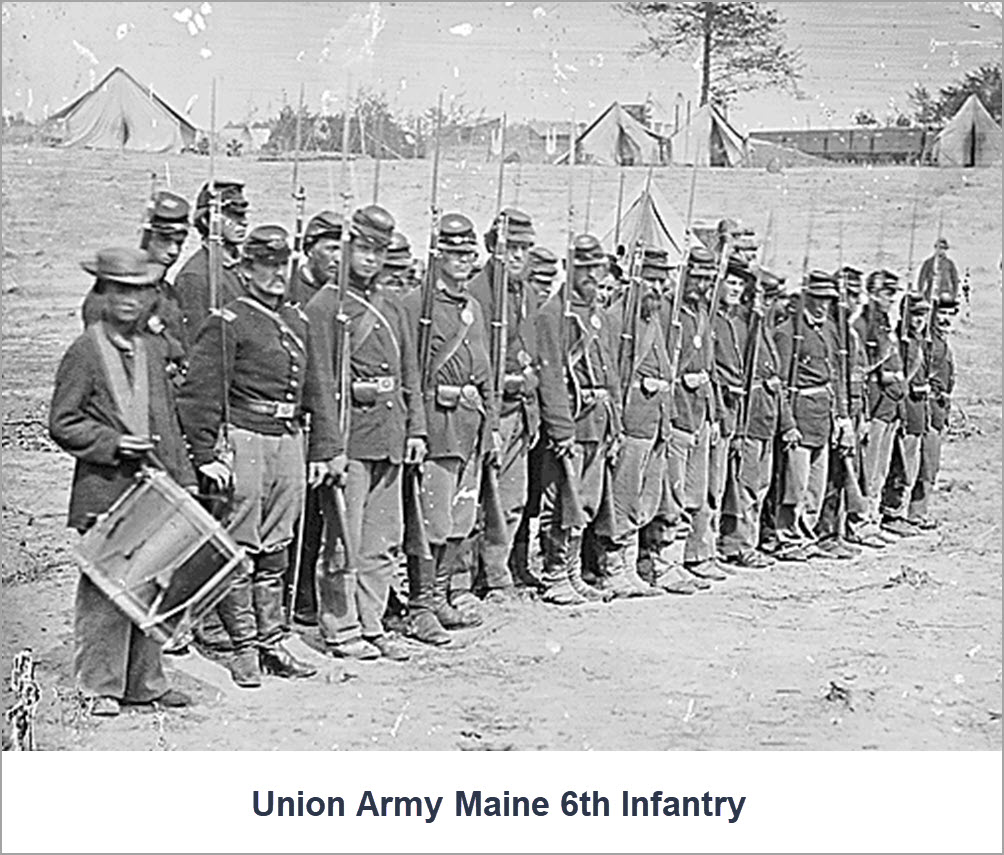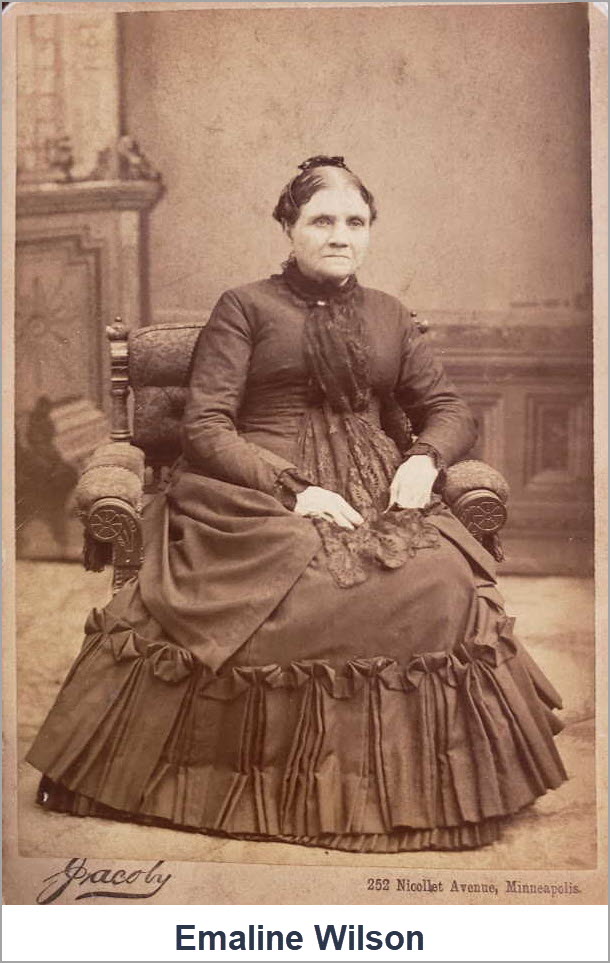WILSON FAMILY NARRATIVE
George Irving Wilson hailed from Cherryfield, Washington County, Maine, the so-called “wild blueberry capital of the world,” where his great-grandfather was instrumental in the town’s founding in 1816. The Wilson family settled on the westerly side of the river, where several generations of the family lived at Spraque’s Falls.
George was the second of ten children born to Mark Wilson and Emaline Tourtelotte (of Calais, Washington County, Maine). A search in the Maine birth records, which were kept as early as the 1700’s in Washington County, failed to turn up a definitive date for his birth. Although the 1900 U.S. Federal Census recorded that George Wilson was born in 1838, the 1850 Census, which is the first census year that recorded the entire family household by name, indicated that George was 15 years of age, supporting a birth year of 1835. George grew up in a home situated on his grandfather’s property, his father dying around 1860.
On 15 July 1861, George enlisted in the Civil War’s Union Army. He served in Maine’s 6th Infantry until 16 August 1864, when he transferred to the 7th Infantry. During the war, George’s mother and siblings moved west to Minnesota, after which several family members continued on to the State of Washington.
While veterans who served in the Revolutionary War and the War of 1812 were given bounty land, this policy was not extended to Civil War veterans. However, veterans of the Civil War, like George Wilson, could deduct the time they served in the war from the residency requirements of the Homestead Act of 1862. Under the Homestead Act, he was granted 120 acres of land northeast of the town of Gualala, adjacent to the Lowrey family (see Lowrey family narrative on this web page). He also purchased an additional 230 acres of land in the same area from the San Francisco land office. He first worked as a lumberman, and then as a surveyor.
According to court records, in 1896 George found himself in debt to both the Gualala Mill and James Peterson. He reportedly sold his interest in some timber to both parties at the same time, resulting in a trial to determine legal ownership of the property.
George purchased the former farm of Lewis Fairbanks (see Fairbanks family narrative, also this web page), where he lived until his death on 19 October 1920. He was well-known in Gualala, and stood at a height of 6 feet, 6 inches tall, which was indeed exceptional in his day. George never married. His estate, which was valued at $1,500, was left to his niece, Minnie Towers of Seattle, Washington, who traveled with her daughter to attend his funeral and burial at the Gualala Cemetery.
Unfortunately, the location of his grave has been lost to time, and his actual burial location within the cemetery is unknown. A redwood marker for George has been placed in remembrance of his life in the cemetery’s Memorial Plot.
Research compiled by Kelly S. Richardson, APR, AG. Anchored Genealogy.


